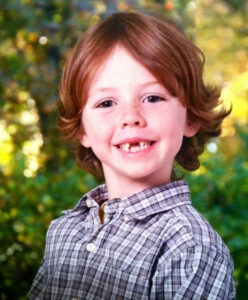They Lost Their Kids at Sandy Hook 10 Years Ago. Their Fight is For Life
A decade after the school shooting that took their children, these Newtown parents have become a political force in the gun control debate.
By Mark Keierleber | December 2, 2022This article was published in partnership with The Trace. Sign up for its newsletters here.
With an infectious smile, 7-year-old Daniel Barden softly tapped the drums, his steady beat holding together the fledgling family band.
The quartet’s intimate performance brought life to the Best Western hotel in Monticello, New York, where Mark and Jackie Barden had gathered with their children to celebrate a joyous milestone: Daniel’s maternal grandfather was turning 90.
“And I think to myself,” Daniel’s sister, 10-year-old Natalie, sang into the microphone alongside her father Mark on guitar and 12-year-old brother James on bass, “what a wonderful world.”
Less than three months later, the Barden family’s world turned from wonderful to horrific. On Dec. 14, 2012, Daniel was among the 20 children and six adults killed in the mass shooting at Sandy Hook Elementary School in Newtown, Connecticut, the deadliest K-12 school shooting in U.S. history.
Ten years later, the Bardens are at the forefront of a new political force in America: a group of parents who have experienced unimaginable loss, and who are channeling their pain into pursuing legislative changes and promoting preventative measures within schools.
The shooting changed the tempo in the Barden household forever. For Mark, a professional guitarist, performing with his three children was “one of the greatest joys I’ve ever had in my life.” But after Daniel’s death, Barden told The 74, he “couldn’t even think about getting near music for a long time.”
Barden felt like a man on a mission. But at first, he didn’t know how to translate that feeling into action. “At the very least, we wanted to make folks aware of what had happened and to see if we could learn more about how to prevent it from happening,” he said.
Barden, who wasn’t politically engaged before the shooting, filled the void with unrelenting advocacy. With Newtown in the national spotlight, he partnered with other bereft parents who questioned how such a heinous crime could unfold in their sleepy suburban town and how they could stop other children from being gunned down in their classrooms. The effort quickly grew into the nonprofit Sandy Hook Promise, an advocacy and lobbying group that he launched with fellow Newtown parent Nicole Hockley. Sandy Hook Promise promotes gun control measures, and trains children and school staff to recognize the early signs that someone could be considering violence.
While mass shootings are more common today than ever, the founders of Sandy Hook Promise and other advocacy efforts that grew out of the Newtown shooting have become a formidable force in the politics of school safety and guns in America. Navigating partisan gridlock in Washington, they’ve helped write into law new firearm restrictions and funding for campus security.
In February, Sandy Hook families secured an unprecedented $73 million court settlement with Remington, the manufacturer of the Bushmaster XM15-E2S rifle used in the Newtown massacre, after arguing the company engaged in dangerous marketing practices that targeted younger, at-risk males. The size and scope of the settlement could become a roadmap for litigation after mass shootings.
And, most recently, in a pair of blistering defamation cases that played out in Texas and Connecticut, families were awarded nearly $1.5 billion against notorious conspiracy theorist Alex Jones, who made repeated claims that the shooting was an elaborate hoax. Both Mark and Jackie Barden testified in the Connecticut trial against the right-wing radio host. The staggering sum pushed Jones into bankruptcy, even while he announced plans to appeal and took steps to shield his assets.

Still, Sandy Hook families face a harrowing reality. While mass school shootings remain statistically rare and campuses have become safer in recent years, active mass shootings — where gunmen open fire indiscriminately in populated areas and kill four or more people — have become more frequent and grown deadlier in the years since Sandy Hook. After the May mass shooting at an elementary school in Uvalde, Texas, where 19 fourth graders and two teachers were killed, a survey showed widespread fear among America’s parents. Nearly a third said they were very or extremely worried about a shooting at their children’s school, according to a poll the Pew Research Center published in October.
“This [Sandy Hook] was unprecedented in this country, a gunman armed with a military assault rifle and high-capacity magazines hunting 6- and 7-year-olds in an elementary school,” Barden said. “Unfortunately, it’s not as much of an anomaly now.”
Advocacy from parents like Barden, a father for whom that fear became reality, is perhaps more potent than ever. Over the course of the last decade, as Sandy Hook Promise found its footing, the National Rifle Association, whose political and financial clout around Second Amendment issues were once considered ironclad, has stumbled through money woes, internal scandals, lawsuits and dwindling membership. Heightened gun laws like universal background checks for firearm purchases enjoy widespread public support.
Earlier this year, Sandy Hook parents attended a White House celebration after President Joe Biden signed the first new federal gun restrictions in nearly three decades. The law, which expands background checks for young adults seeking to buy a gun and encourages states to adopt “red flag” laws to remove weapons from people deemed a threat, offers just a fraction of the policies that Sandy Hook Promise promotes.
Yet for Barden, his decision to thrust himself full time into the gun control policy arena was about far more than universal background checks, assault weapons bans and mandatory waiting periods. It was about his son.
“We wanted people to know who our Daniel was,” Mark Barden said. Jackie Barden who teaches in a small school district in neighboring New York, serves on the board of Sandy Hook Promise.
On the last day of his life, Daniel expressed for the first time an interest in learning the piano. Before the school bus arrived outside their home on that holiday season morning, Barden taught his son his first song.
“It was Jingle Bells and he played it beautifully,” Barden recalled. “I’m telling you, he was going to be good.”

‘Secondhand smoke moment’
In the days, weeks and months after their children were killed, a group of grieving parents held meetings at the library and in people’s living rooms to unpack the tragedy and find a way to move forward. More than two dozen nonprofit groups formed in response to bolster campus security measures and help victims’ families pay for medical bills, mental health care and funerals. They also dove head first into one of the country’s fiercest political wars: guns.
A month after the shooting, 11 families of victims met privately in Washington, D.C., with then-Vice President Biden to promote new firearm laws. Sandy Hook Promise sought to ban assault rifles and limit the size of magazines after the Newtown gunman managed to unload 154 rounds of ammunition in less than four minutes from an AR-15-style rifle. The gunman carried 10 30-round magazines. It was during a brief pause in gunfire to reload that several children took the chance to flee.
“This [Sandy Hook] was unprecedented in this country, a gunman armed with a military assault rifle and high-capacity magazines hunting 6- and 7-year-olds in an elementary school. Unfortunately, it’s not as much of an anomaly now.”
Mark Barden, whose son, Daniel, was gunned down at Sandy Hook Elementary School
Barden said it was the extraordinary nature of their tragedy that catalyzed a class of new gun-safety advocates, including those without direct ties to Newtown. Shannon Watts, a stay-at-home mom from Indiana, formed Moms Demand Action for Gun Sense in America as a Facebook group after watching news about the Newtown shooting on television. Moms Demand merged with Mayors Against Gun Violence and is now part of Everytown for Gun Safety, the country’s largest lobbying group for gun control. The group is heavily funded by billionaire Michael Bloomberg, who founded Mayors Against Gun Violence in 2006 and chairs Everytown.
Other members of the Newtown community took different approaches to advocacy. Stay-at-home mom Po Murray, who lived next door to the 20-year-old gunman, set out to form a coalition to “speak unapologetically” in support of new federal gun laws.
She became co-founder and chairwoman of the Newtown Action Alliance, a volunteer-run nonprofit that organizes rallies to raise awareness about gun violence. Each year, her group holds a vigil in Washington, D.C., that brings together gun violence survivors and victims’ families from across the country to mourn those who’ve been killed. The 10th National Vigil for All Victims of Gun Violence will be held Dec. 7 at St. Mark’s Episcopal Church.
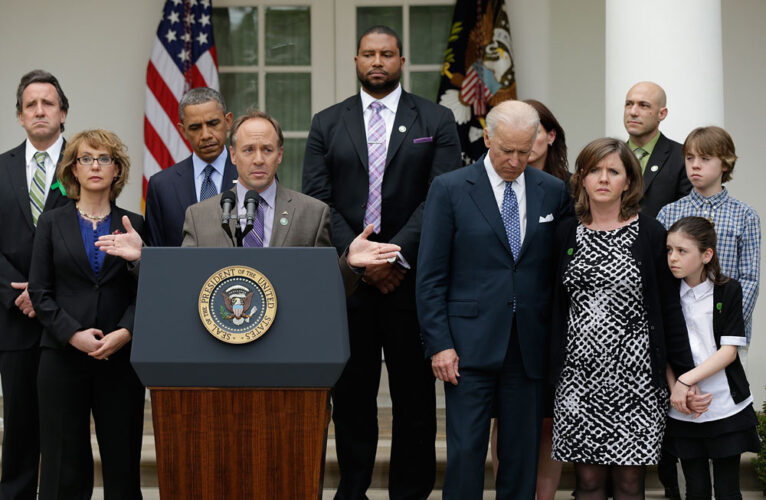
To learn the ropes in Washington, Sandy Hook Promise leaders consulted with Matt Bennett, a veteran in the gun policy debate who co-founded and is now executive vice president of public affairs at Third Way, a center-left think tank. He delivered a bitter pill: Despite Democratic control of the White House, gun-control proponents lacked numbers in Congress.
“We learned a lot about the gun lobby and we learned about this polarizing component where anyone advocating for gun safety policy was going to go up against it,” Barden said. “Politicians were willing to go against the will of their constituents to appease the gun lobby, and as crazy as that sounds, that’s the reality.”
Bennett said he advised the parents to set both long-term goals, like a ban on assault weapons, while advocating for policies that were more likely to pass in the short term, including reforms to the background check system. It’s through reachable goals and a willingness to compromise to gain support from Republican lawmakers, Bennett said, that Sandy Hook Promise has made itself more successful than other gun control efforts.
“Even in the depths of their most profound grief, they were able to be strategic and go after things that seemed achievable and important,” Bennett said. The group is also financially successful: last year, it, reported roughly $30 million in revenue and $21 million in expenses.
But they still found themselves facing some of the country’s most unhinged extremists.

“On one hand, they were being put into this incredible national spotlight and on the other being harassed by these lunatics that are the followers of Alex Jones,” he said. “There were parents of murdered children saying, ‘I’m terrified, I’m getting phone calls every night from these people threatening me.’”
The group’s first victory occurred closer to home, in the Connecticut legislature. Less than three months after the shooting, they partnered with then-Gov. Dannel Malloy to pass a state assault weapons ban.
It took much longer for their Washington lobbying to bear fruit. This summer’s bipartisan gun control legislation passed with the support of 14 House Republicans and 15 Republican senators, marking a turning point for the movement.
DATA ANALYSIS
Mass Shootings Since Newtown
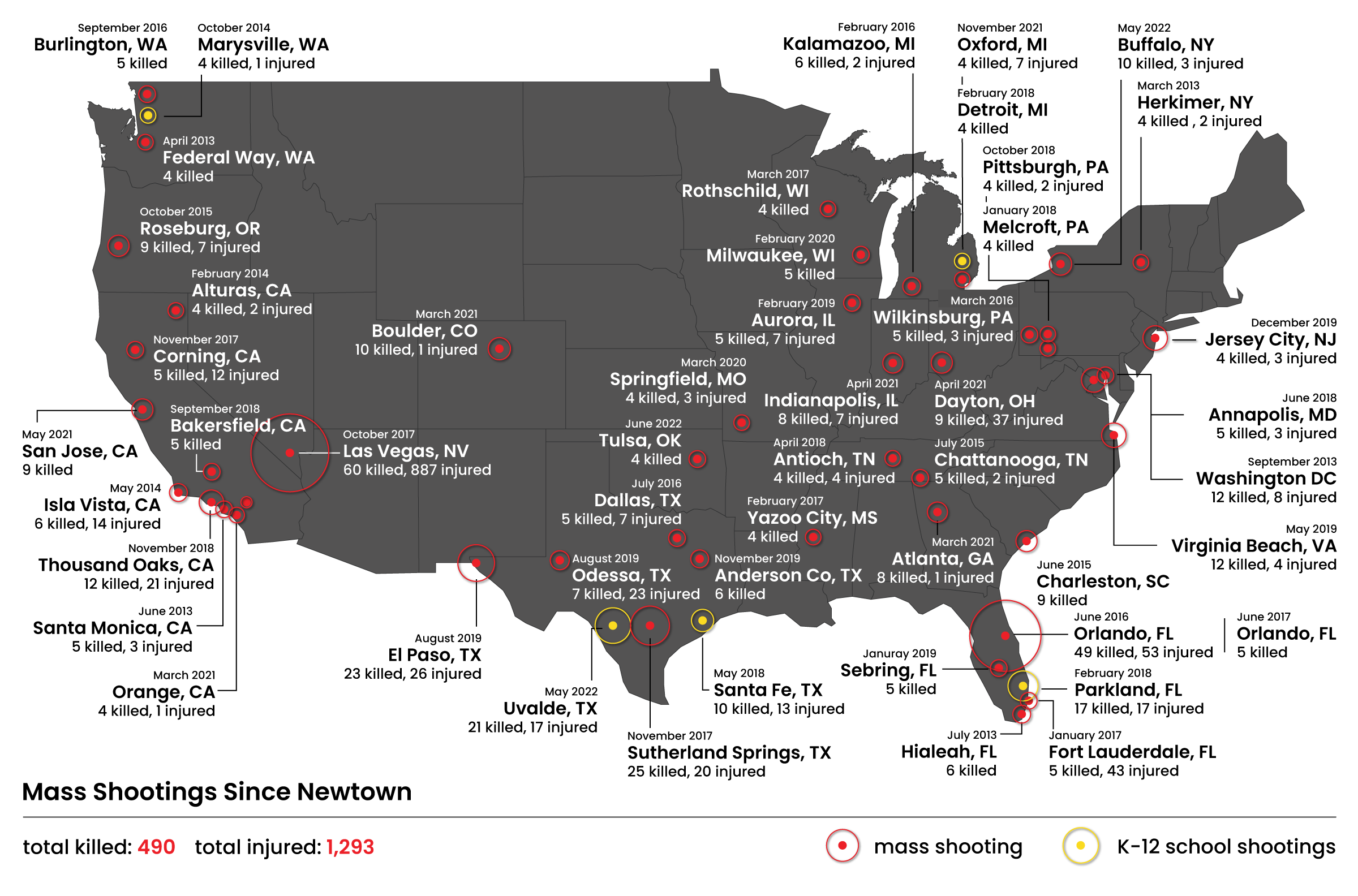
The milestone followed not only the Uvalde mass shooting, but one in Buffalo, New York, just two weeks earlier that left 10 dead in a supermarket. Between the Sandy Hook massacre and the law’s passage, there were 52 active mass shootings with four or more fatalities in the U.S., according to an analysis of data compiled by The Violence Project and the Gun Violence Archive. The shootings, which resulted in at least 490 deaths and 1,293 injuries, include the 2016 shooting at the Pulse nightclub in Orlando, Florida, that killed 49 people; the 2017 shooting at a Las Vegas music festival that killed 60 people and the shooting at Marjory Stoneman Douglas High School in Parkland, Florida, that killed 17 people — 14 of them students — on Valentine’s Day 2018.
“We’re reaching that secondhand smoke moment, and I’ve said this for many, many years: Once people feel that they could lose their lives or their children could lose their lives, then they will get on the right side of history and start voting on this issue,” Po Murray, of the Newtown Action Alliance, said. “And I think people are starting to vote on this issue.”
‘A tremendous void’
On the morning of the shooting, Michele Gay, a teacher turned stay-at-home mom, followed emergency vehicles to the elementary school campus where her 7-year-old daughter Josephine was killed.
After teaching in and around Baltimore, she had noticed Connecticut’s more relaxed approach to campus security. After Josephine’s death, she said, she regretted the missed opportunities to advocate for more robust measures.
“I remember sitting in the parking lot with this sense of knowing that I would somehow be involved in making sure that our schools were safe going forward,” she said.
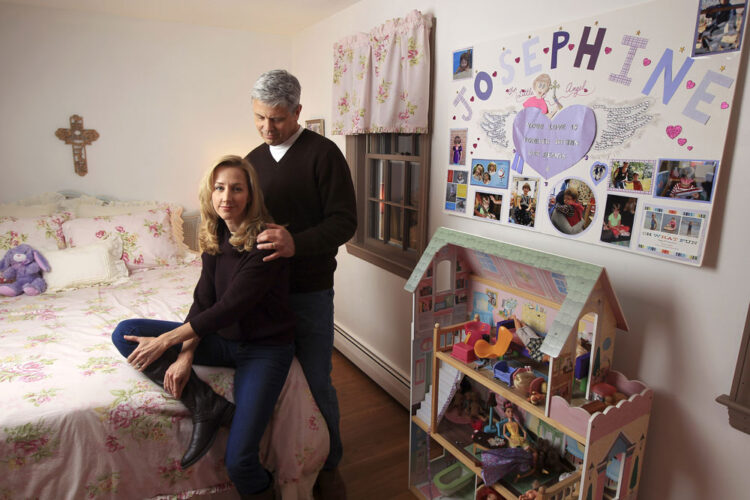
Gay had stopped teaching to care for Josephine, who had autism. When tragedy struck, the family had a buyer lined up for their Newtown home and were in the process of relocating to suburban Boston in pursuit of schools with first-rate special education programs. The family ended up making the move north without its youngest member, but Gay’s full-time advocacy for Josephine never stopped.
In honoring her daughter’s memory, she became the co-founder and executive director of the nonprofit Safe and Sound Schools, which steers clear of the gun control debate and instead pushes for heightened emergency planning, campus security and crisis response. In 2020, the group reported $578,000 in revenue and $528,450 in expenditures.
“When she was killed, it left a tremendous void in my life, just ‘What do I do now?” Gay said, who recalled returning from the elementary school that day to a kitchen equipped for Josephine’s special diet. “The refrigerator was stocked with all of her gluten-free, casein-free, soy-free, fun-free foods. That was our life and I realized, looking back now, how this has become my way to continue to advocate for her.”
Rather than lobbying in Washington, Gay said her years in the classroom led her to an approach that centers around education. Safe and Sound Schools, which relies on funding from school security vendors and speaking fees, provides school safety and security guides to parents and educators, while Gay and other network members frequently present at conferences for school-based police and other stakeholders.
“Emergency management just felt natural, almost like you do some version of emergency management everyday as a teacher or an administrator. A lot of it has just intuitively made sense to me.”
Michele Gay, whose daughter, Josephine, was gunned down at Sandy Hook Elementary School
And while she’s managed to sidestep the controversies surrounding U.S. gun laws, her group has instead found itself in the debate over whether fortified campuses and school-based police can keep kids safe. After Sandy Hook, the NRA promoted the virtues of “school hardening,” bouying the school safety industry. Security consultant Kenneth Trump, president of Cleveland-based National School Safety and Security Services, said that while parents’ powerful firsthand experiences give them credibility in conversations about school safety, they lack the training and experiences to offer concrete advice.
He questioned whether Safe and Sound Schools’ reliance on donations from security companies had compromised the advice it offers educators.
“There becomes a financial piece to this and it becomes convoluted,” said Trump, whose company also provides consulting services to schools on security issues. “If you’re underwritten by the vendors, well, what do you owe them?”

Gay said her group relies on expert advisers, including Frank DeAngelis, the retired principal of Columbine High School, and Mo Canady, executive director of the National Association of School Resource Officers. But she also goes by her own instincts.
“Emergency management just felt natural, almost like you do some version of emergency management everyday as a teacher or an administrator,” Gay said. “A lot of it has just intuitively made sense to me.”
‘The North Star’
Newtown police missed warning signs that a gunman would soon kill their children. Four years before the massacre, cops were warned about the perpetrator’s access to weapons and his desire for blood.
Online, the gunman researched mass shooters who came before him. A woman who engaged with the shooter online more than two years before Sandy Hook told FBI investigators he had a list of prior attacks and was “meticulously documenting the details of hundreds of spree killings and mass murders.”
Missed warning signs have become common before mass school shootings, including in Uvalde, where the gunman’s obsession with violence became so well known that other students had given him the nickname “school shooter.” Just days before the attack, the 18-year-old suspect posted on social media his desire to do something that would “put him all over the news.”

Though there is no single profile of a mass shooter, virtually all of them acted in ways that hinted at their potentially violent behavior, according to a 2019 Secret Service report. Such patterns, according to the Secret Service, include a history of substance abuse and violence at home and an obsession with firearms. In a study of averted school shootings, the Secret Service found that two-thirds were prevented when a classmate recognized concerning behaviors and reported them to adults.
More schools across the country are increasing their efforts to identify children with a penchant for violence before they carry out an attack. The threat assessment approach, pioneered by the Secret Service, generally brings together school administrators, mental health officials and police officers to flag potential warning signs and intervene.
Beyond advocating for new firearm rules, training students and educators to recognize these signs has become a staple of Sandy Hook Promise’s work. After researching ways to prevent future violence, Mark Barden said the consistent presence of such warning signs “was like the North Star for us.”
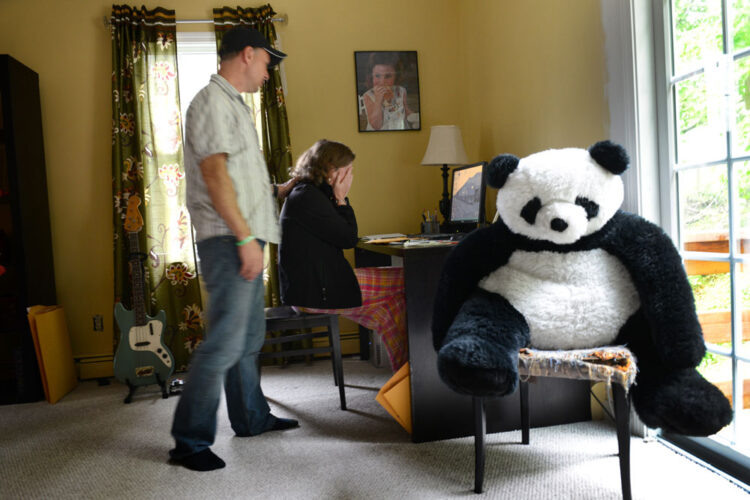
“We wanted to have more of an immediate impact than just grinding the gears and making the sausage in Washington,” he said. More than 14 million students and educators have since participated in the group’s “Say Something” training program. A similar program, “Start With Hello,” empowers youth to fight social isolation and reach out to peers who may be lonely. “We’re building this culture in schools where students are more aware of one another, are likely to step in and give someone assistance or connect them to help if they need it.”
In the wake of the 2018 mass school shooting in Parkland, Sandy Hook Promise helped write the STOP School Violence Act, which saw its funding grow from $75 million that year to $300 million after the Uvalde tragedy. Along with providing schools money for school security, the federal law gives grants for programs — like those offered by the nonprofit — that teach students to identify signs of violence and to intervene. It also incentivized the creation of threat assessment teams. The group reports just 6% of its revenue is from government grants, according to its most recent annual report.
“We have made a commitment to give our programs away to schools at no cost to the schools,” Barden said. “However, it comes at a great cost to us” that the legislation helps offset.
Trump, the school security consultant, said the law — which Sandy Hook Promise helped write and now provides a funding source for them — “raises a lot of ethical questions and questions around conflicts of interest.”
Meanwhile, civil rights groups have warned that threat assessment teams could open students to discrimination. Attempting to identify would-be shooters before they act could push at-risk youth, including students of color and those with disabilities, into the school-to-prison pipeline. Their arguments resemble those from an unlikely ally: the National Rifle Association.
In a public service announcement, Sandy Hook Promise depicted a school shooter whose warning signs, including an interest in guns, went under the radar until it was too late. In a 2016 blog post, the NRA accused the group of portraying any young person interested in guns as a would-be mass killer. That is the “very definition of demonizing gun owners,” including hunters and scholastic shooting teams, the group said.
“For (Sandy Hook Promise) to suggest that schools somehow underreact to any expressed interest in firearms is laughably absurd,” the post states. “The problem is exactly the opposite, as students have been routinely disciplined (and sometimes arrested) in schools throughout the country for harmless actions that merely suggest the idea of a firearm.”
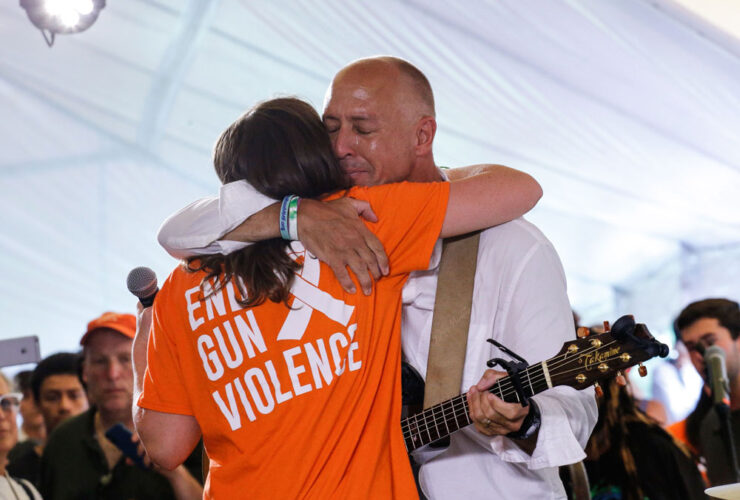
Finding a voice
During the Barden family band’s 2012 birthday performance, 10-year-old Natalie confidently conveyed the lyrics made famous by Louis Armstrong.
“I see skies of blue, and clouds of white,” she sang in time to Daniel’s soft drumbeat. “The bright blessed day, the dark sacred night.”
After the massacre at the school she also attended — and as television crews swarmed the family home — the fifth grader remained silent. At such a young age, Natalie said, she struggled to grasp what happened to Daniel and why someone would carry out such an atrocious act. It wasn’t until high school that she became more vocal.
Then the shooting occurred at Marjory Stoneman in 2018, when Natalie was 16. After Sandy Hook, it was the parents who led the charge, but now it was teenagers like her taking center stage.
“We all saw the Parkland kids speaking out,” Natalie said. “That was a big inspiration to me. A lot of kids in Newtown, because time had passed and we were older, I feel like it made sense for us to join that movement.”
Now, as she advocates for new firearm laws alongside her father, she incorporates music into her messaging, singing songs — like Humble and Kind by Tim McGraw — that remind her of Daniel, who would have been a 17-year-old junior had he survived.
“I would get so nervous speaking, but then it felt like I could almost say more by just singing someone else’s words,” she said. “I’ve really, really enjoyed that part of using music to convey my emotions.”
Just recently — this time without Daniel there to celebrate — the Bardens gathered in their backyard to mark a milestone many families never get to see: Martin Giblin, Daniel’s grandfather, turned 100.
Get stories like these delivered straight to your inbox. Sign up for The 74 Newsletter

